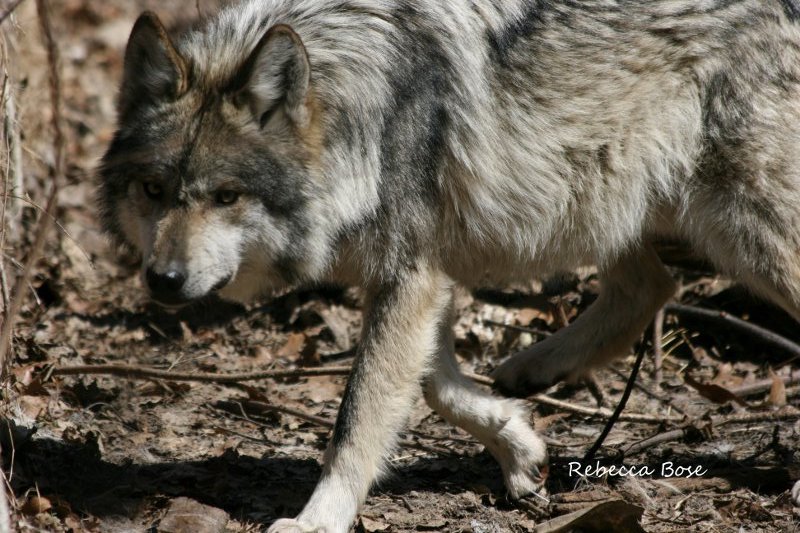14
Sep
In the News: Mexican Gray Wolves Will Get More Room To Roam

Feds settle lawsuit, brightening prospects for Southwest wolf recovery
FRISCO — Mexican gray wolves may get a little more breathing room in the southwestern U.S.
Settling a pair of lawsuits this week, the U.S. Fish and Wildlife Service agreed to propose increased recovery territory for the rare predators in Arizona and New Mexico and will drop plans to capture wolves entering the two states from Mexico. As part of the agreements, the agency will finalize a rule to allow direct release of captive Mexican gray wolves into New Mexico and to allow Mexican wolves to establish territories in an expanded area of the two states.
The proposed changes could be crucial to enabling the wolves to establish genetically healthy populations without being limited to an artificially small recovery area. Mexican gray wolf populations have been inching upward toward recovery goals. The 2012 census found 75 wolves living in the wilds of Arizona and New Mexico, up from 58 a year ago and 50 at the beginning of 2011. But the number of breeding pairs has dropped from six to just three pairs.
“These agreements should breathe new life into the struggling Mexican wolf recovery program and expand the wolf’s habitat here,” said Michael Robinson, a wolf advocate with the Center for Biological Diversity. “The Mexican gray wolf is an icon of the Southwest and I’m thrilled it will have better protection.”
The first settlement was reached in a lawsuit challenging a permit the Service had granted itself in November 2011 authorizing the trapping and indefinite incarceration of any wolves entering Arizona and New Mexico from Mexico. The Mexican government has been releasing endangered Mexican gray wolves a few dozen miles south of the border and these wolves could establish territories in the U.S. at any time. The Fish and Wildlife Service rescinded the permit and agreed that it lacks the authority to issue a permit to capture fully protected endangered gray wolves entering from Mexico.
“Our agreement provides important protection to endangered Mexican gray wolves by stopping this little-known government plan to capture wolves that enter Arizona and New Mexico from Mexico,” said Robinson.
The second agreement concerns a long-sought revision to a 1998 rule for managing the roughly 75 wolves that have been reintroduced into a small area in central Arizona and New Mexico called the “Blue Range Wolf Recovery Area.” After years of delay, the Fish and Wildlife Service has proposed to change the rule to allow direct release of wolves into the Gila National Forest in New Mexico, where there is extensive habitat, and to expand the area where wolves are allowed to establish territories to include all of Arizona and New Mexico between Interstate 10 and Interstate 40.
Under the current rule wolves from the captive pool can only be released in Arizona and they are captured if they establish territories outside the current recovery area. Under the agreement this rule will be finalized by Jan. 12, 2015. Scientists and conservationists are objecting to the fact that the rule will still require capture of wolves that cross I-40 or I-10 from the recovery area.
“We’re glad the Fish and Wildlife Service is finally making much needed changes to the Mexican wolf recovery program but these changes clearly don’t go far enough,” said Robinson. “The science is clear that if Mexican gray wolves are to have any shot at recovery, they must be allowed to expand and establish population centers beyond what Fish and Wildlife Service has proposed. The Grand Canyon, southern Rockies and borderlands all provide habitat where wolves could be restored. We sure hope the Fish and Wildlife Service will allow wolves to move into these areas.”
The agency had hoped to have at least 100 Mexican gray wolves in the wild by 2006, but the program has struggled because of illegal shooting, captures in response to livestock conflicts and restrictions on where wolves can be released from captivity. The rescinded permit would have allowed for even more captures primarily to respond to conflicts with livestock. Research suggests such conflicts are better dealt with through changes in animal husbandry that reduce the likelihood that wolves and livestock will come into contact.
This article appeared in the Summit County Voice on August 27, 2013.
#########
These settlements are a step in the right direction, however recently the U.S. Fish and Wildlife Service (USFWS) proposed more changes to the rules governing the Mexican wolf reintroduction.
Public comments are being acepted through October 28, 2013.
We highlight four key points that can be used when submitting your comments to the Fish and Wildlife Service regarding the proposed rule changes. Please click here for talking points and contact information.
_____________________________________________________________________________________________________________________
Click here to join our email list for Mexican gray wolf updates and action alerts.
Visit us on Facebook here.
Photo credit: Rebecca Bose, Wolf Conservation Center



